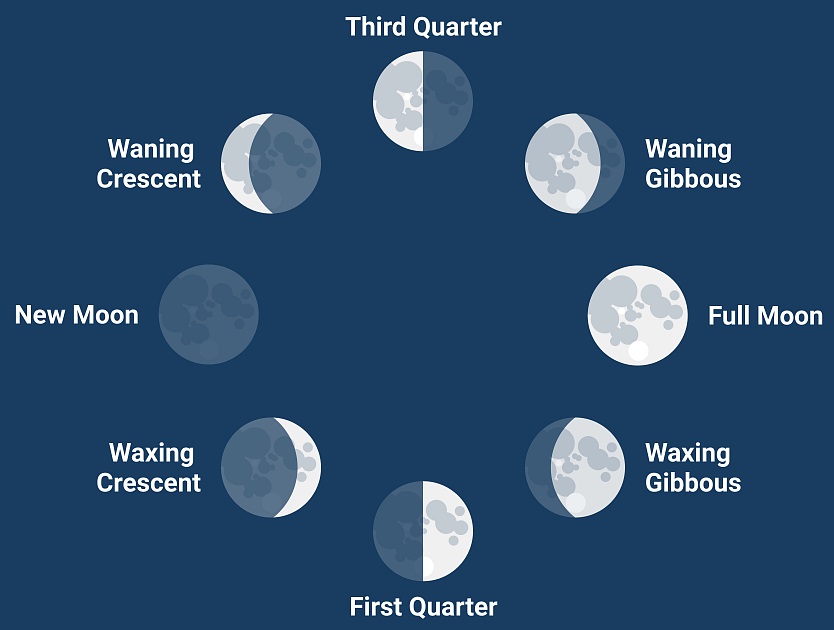Different Phases of the Moon
When you look every time in the sky at night, you see silver moon shining bright, illuminating the Earth from its light. Not only that, but the moon also seem to have magical powers to change its shape, and can willingly appear and disappear. But the matter of the fact is, like any magic trick, this is an illusion as well. Yes, you will be surprised to know that moon doesn’t emit any light itself, and the moonlight we see is actually the Sun’s light reflected off the lunar surface.

Sunlight is also responsible for the moon’s transformation from the new moon to the full moon and back again under the process we call the lunar cycle or the phases of the moon. But the vital question is, how does this happen?
You see as we know, the moon revolves around the Earth at a fixed orbit and doesn’t have its own light. So, when the moon is exactly in the middle of the Earth and the Sun, it becomes nearly invisible in the night sky as the side facing the Earth does not get the sunlight. This invisible phase of the moon is called the new moon. But, as the moon continues to orbit and moves a little ahead in the waxing phase, after two or three days, some light from the sun starts to fall on some of its part, which makes the moon appear in a crescent shape in the phase called the waxing crescent.
And as the moon continues its orbital journey, the sun’s reflection keeps on increasing on the Moon’s surface. And in about a week, when the Sun is in a 90 degree position to the moon, we could see its half-lit portion. This phase is called the first quarter. Next, in about two to three days after the first quarter the moon is more than half full and still increasing its illuminated surface in the phase we called waxing gibbous. And in about two weeks after the new moon or the invisible moon, it reaches behind Earth with respect to the sun, and the full side of the moon facing the Earth gets the sunlight due to which finally we can see the full moon.
But it doesn’t end there, as now comes the waning stage where the moon starts its return journey from full moon to the invisible new moon as the light begins to decrease on its surface, and enters the waning gibbous phase. After this occurs the last quarter phase, during which the moon is once again half illuminated, but its area that’s visible is on the decline. This is followed by the waning crescent phase in which the moon shrinks back to crescent that’s less than half full. And finally, the moon finishes its journey in about 29.5 days and comes back between the Earth and the Sun to its new moon phase marking the completion of the lunar cycle just to start over again.
Did you know when the moon appears to be getting bigger it’s called waxing and when it looks like it’s getting smaller, it is called waning? Also the word “gibbous” comes from the Latin for “Hump” and has been used for centuries to describe rounded or convex shapes, like swollen eyes or the back of the camel.
No comments:
Post a Comment